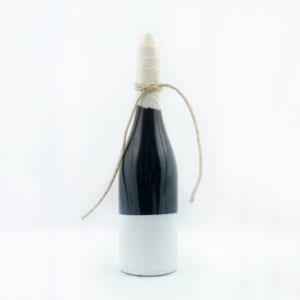Grete and I were “pregnant” for a year with the idea of combining the best of our two professional worlds. Vermouth, flavored wine is an excellent way of expressing this bond with taste. The wormwood comes from the vineyard (Ried Kraft Göttlesbrunn), in the cellar the Blaufränkisch matured for 18 months in small wood and last autumn Grete burned the heart of the spontaneous fermentation, the yeast of our rosé and white wines. The herbs, roots, flowers and seeds have been worked out over many tests so that they complete the aroma of the wormwood. You can find Persian mint, star anise, lemon leaves, orange zest, chicory root (roasted Wegwartroot), coriander seeds, cardamom, chamomile flowers and vanilla pulp. We only use real plants (parts) in organic quality. The wormwood was harvested and rubbed by hand by my father (Stein).
In the ancient civilizations, it was customary to add herbs or sweeteners such as flowers, roots or bark to wines. The Romans as well as the Chinese, Greeks and Mesopotamians added wormwood, among other things, to their wine. Its scientific name Artemisia comes from the Greek goddess of hunting Artemis. Wormwood was considered a remedy, especially for intestinal diseases and loss of appetite. Hildegard von Bingen used the herb as did Hippocrates, the most famous doctor of antiquity. Artemis was the inspiration behind the idea of naming it and then designing the bottle. Hannes Rohringer, architect, artist, designer, craftsman and creative designer – dispenses with labels and now presents Artemisia to us. Each bottle is unique.
Practical information: The bottle is resealable, has alc. 16% vol., Is extra dry (10 g / L residual sugar, up to 30 g / L would be possible with wormwood under this name), enjoy at room temperature or slightly chilled: Pure, sprinkled with tonic or sprinkled with soda as a summer long drink






